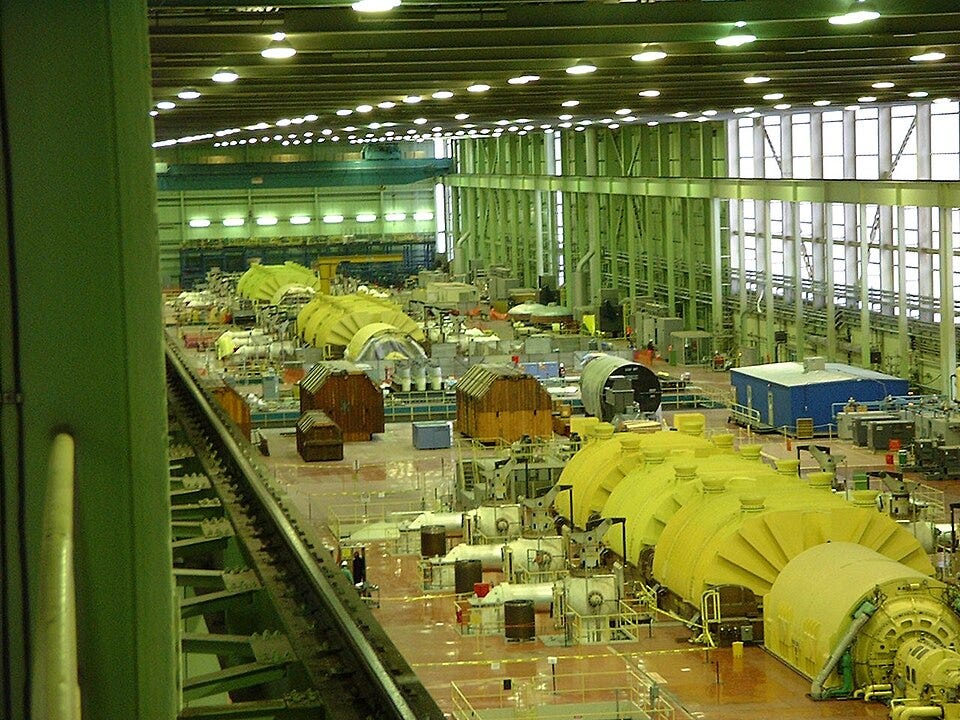Welcome back to Decouple, a weekly podcast about energy, technology, and the planet, with interviews by Chris Keefer. Watch on YouTube, Spotify, or Apple.
This week, we cover the recent blackout on the Iberian peninsula. Guillem Sanchis Ramirez, a Spanish nuclear engineer and advocate, walks us through the event that plunged over 50 million people into powerlessness and the power grid on which it happened. We cover Spain’s precarious dance with renewable energy, its political resistance to nuclear power, possible paths forward for the country’s energy supply, and our essential human reliance on stable electrical systems.
Watch now on YouTube.
Note: This interview was recorded on April 30, 2025, still in the midst of the story’s rapid development.
We Talk About
Causes and immediate impacts of the April 28 blackout in Spain and Portugal
The view from Spain: traffic jams, stranded commuters, disrupted daily life
Grid inertia and frequency management in renewable-heavy systems
Political and historical context of nuclear energy in Spain
Challenges of energy policy in a polarized political environment
Potential economic and environmental consequences of Spain’s planned nuclear phase-out
Importance of maintaining grid-forming resources alongside renewables
France's role in preventing a broader European grid failure
Shifts in public perception and political support for nuclear energy in Spain
Deeper Dive
As Guillem says, “the electricity grid is something we only miss when it's gone.” Like clean water or functional roads, electricity forms the invisible foundation of modern life, until suddenly it doesn't. For several hours on April 28th, more than 50 million people on the Iberian peninsula were painfully reminded of their fundamental reliance on electricity. Commuters were stranded, elevators trapped thousands, basic communications faltered, and in the darkness people died. Neighbors grouped around battery-powered radios, suddenly reliant on devices that hours before seemed obsolete.

According to Guillem, Spain’s blackout began as hiccups at solar plants in the southwest of Spain. Within seconds, the disturbance spread, tripping offline 15 gigawatts—over half the active generation—triggering a cascading failure. Without sufficient inertia, the fragile balance between consumption and generation quickly collapsed. Spain's recent pride in briefly running on pure renewables was overshadowed by the stark reality that renewables alone lack the grid-forming capabilities essential during crises.
“60% of generation vanished in five seconds.”

Grid inertia, once an obscure term, became critical public knowledge overnight. Thermal plants, especially nuclear, offer stability through massive rotating turbines. These turbines act like vast flywheels, stabilizing the grid by absorbing minor fluctuations. However, at the time of the blackout, nearly half of Spain’s nuclear fleet was offline for scheduled maintenance.
"The inertia from France’s nuclear reactors helped dampen the spike."

We should note that determining the precise cause of the blackouts is no simple task, and power systems engineers have taken to social media to offer their theories and analyses of what went wrong. Some, like Luis Badesa, argue that low grid inertia is not strictly to blame for the widespread blackouts as much as a certain type of protective relay, though he acknowledges it could well have played a role.

For all the talk about the “resiliency” of distribution energy systems, the fragility of Spain’s grid was compounded by the country’s ambitious renewable policy. As Guillem argues, economic incentives and liberalized markets pushed cheaper renewables to the forefront, sidelining conventional sources like nuclear and gas. Spain’s nuclear reactors, reliable but politically controversial, were either partially offline for economic reasons or fully stopped due to seasonal refueling, exposing the grid to greater risk. Prime Minister Pedro Sanchez swiftly denied that renewables or nuclear phase-out policies contributed to the blackout, a politically charged response demonstrating the contentious atmosphere surrounding energy debates.
Spain’s nuclear history is complicated. Initial enthusiasm during the Franco era faded amid political upheaval and environmental activism, leaving Spain with fewer reactors than initially planned. Current political narratives continue to push for nuclear phase-out despite growing grass-roots support for nuclear energy — for example, a recent pro-nuclear demonstration at the Almaraz nuclear plant drew thousands to protest the plant’s closure.

The broader European context highlights the blackout’s continental implications. Events like the Iberian blackout cannot go ignored. The results of fanciful energy policies must eventually play out in the real world. European leaders must confront hard truths about grid stability, economic realities, and energy security.
Let’s hope we can learn from hard lessons.
Keep the lights on and ideas flowing at Decouple Media—consider making a pledge on Substack or a tax-deductible donation via our fiscal sponsor.
Timestamps
00:00 Introduction
01:45 Experiencing the Iberian Blackout
05:00 Humanity’s dependence on electricity
07:46 What we know happened
13:57 An increasingly vulnerable grid
23:09 History of nuclear in Spain
28:49 Political response to the blackout
33:38 Spain’s nuclear phaseout and changing attitudes
38:19 Economics of shutting down Spanish nuclear
41:45 Economics of renewables in Spain
44:20 Can Spain replace its nuclear plants?
46:28 France’s role in preventing a wider blackout
48:07 Final reflections
Keywords
Iberian blackout, grid inertia, nuclear energy policy, renewable energy fragility, Spanish energy politics, cascading grid failure, nuclear phase-out, electricity market liberalization, electric island, human dependency on electricity
Note: This content was produced with the help of modern AI.











